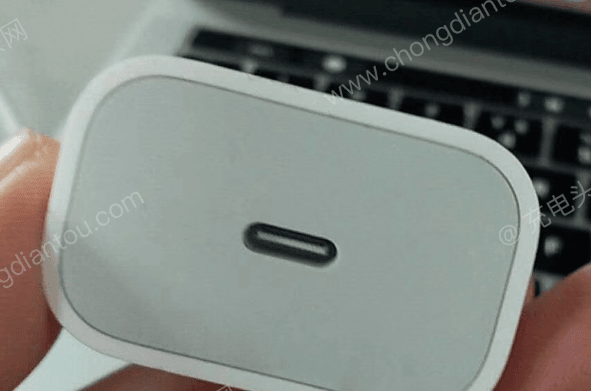Apple has long been rumored to be planning to include a new, faster 18-watt USB-C charger and Lightning-to-USB cable with every new iPhone shipped later this year (possibly the iPhone 11). Now some new leaked photos of what is claimed to be the iPhone 11 USB-C charger seem to back up what the rumors have been claiming so far.
Is the iPhone 11 USB-C charger ready?
The new photos shared by Chongdiantou (via Mac Otakara) purportedly show an engineering prototype of the U.S. version of the charger. As of now, it cannot be confirmed whether the photos actually do show the rumored iPhone 11 USB-C charger, but they do look convincing.
From a design point of view, the charger in the picture looks similar to those in previously leaked images and to the 5-watt charger that comes in the box of existing iPhones. The design is simple with two prongs on one end and a connector port on the other. Even if the final product deviates from the one shown in these pictures, chances are that Apple is designing something similar.
If the Cupertino, Calif.-based company is indeed working on such a charger and plans to include it with upcoming iPhones, then it would mark the first major change in the iPhone’s wall charger. Since the beginning, iPhone users have had to contend with the 5W charger. Though the 5W works well, it fails to supply the phone with the necessary power to charge at its fastest possible speed.
The iPhone 8, iPhone 8 Plus and iPhone X do come with fast-charging technology, but Apple’s 5W charger is not fast enough to take advantage of the technology. Thus, users must buy third-party chargers to use the quick-charge feature, which can crank up the battery from 0% to 50% in under half an hour.
Rumors about the iPhone 11 USB-C charger are not new. Similar claims also surfaced last year, but at the time, there was no photo to back it up. However, drawings of the charger for the United States and Europe were leaked recently. The design for the U.S. model showed a U.S. plug, while for the EU model, there is an outline of the inner oval, which matches the new photos. The leaked images, however, should be taken with a grain of salt. The labeling raises some doubts, and the design also looks less sophisticated than what we’ve seen in earlier schematics.
Growing popularity of USB-C ports
USB-C ports are pretty common now, unlike the Lightning port, which is exclusive to Apple devices. Apple has added USB-C ports to the latest MacBook Pro models. Most flagship Android phones, including the Samsung Galaxy S9, Google Pixel 2, and OnePlus 6, now have USB-C ports. With more device makers switching to USB-C ports, users will be able to use the same accessories across all their devices.
According to trusted analyst Ming-Chi Kuo, the new iPhones coming this year will have bigger batteries and a USB-C type charging port. Further, Kuo has said that another distinctive feature will be dual-SIM support. Kuo believes the 6.1-inch iPhone will get iPhone X-like features, including the notch, which could bring some challenges for Apple in mass-producing it.
Is the AirPower wireless charging mat coming this year?
Speaking of accessories, there are reports that Apple will not include the 3.5mm to Lightning dongle with new iPhones this year. The iPhone maker is also believed to be working on an AirPower Wwreless charging mat, which might get released with the 2018 iPhones this fall. Apple first announced the AirPower wireless charging mat last year during the launch event for the iPhone X and Apple Watch Series 3. Since then, there has not been any word on the product, suggesting that the charger might be launched at this year’s event.
According to Bloomberg’s Mark Gurman, the wireless charging mat will cost as much as $150. Further, it is believed that the gadget will charge up to three devices at once. During the keynote last year, Apple showed how the iPhone X, Apple Watch and wireless AirPods can be charged on the mat all at once.
Apple’s AirPower wireless charging mat is based on Qi charging technology, which is quite popular among tech companies. However, the inherent drawback of the Qi technology is that it does not enable multiple devices to be charged at once. This limitation of the technology is believed to be a major reason behind the delay in the charging mat’s launch.





